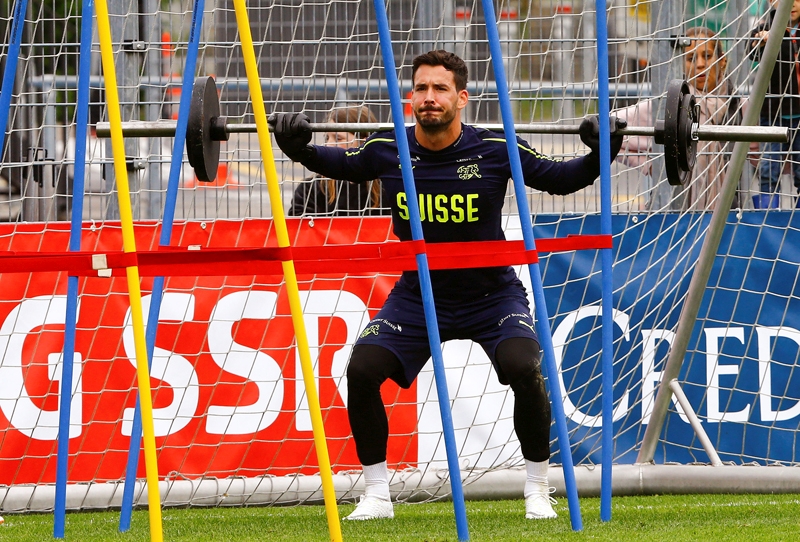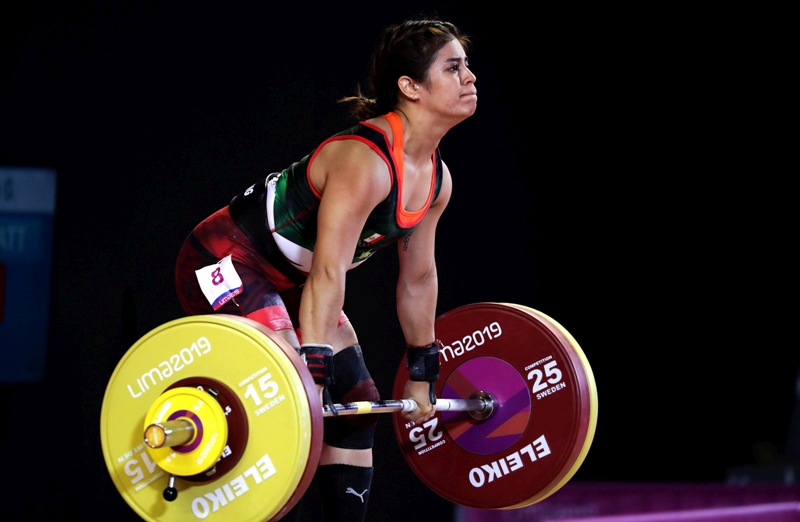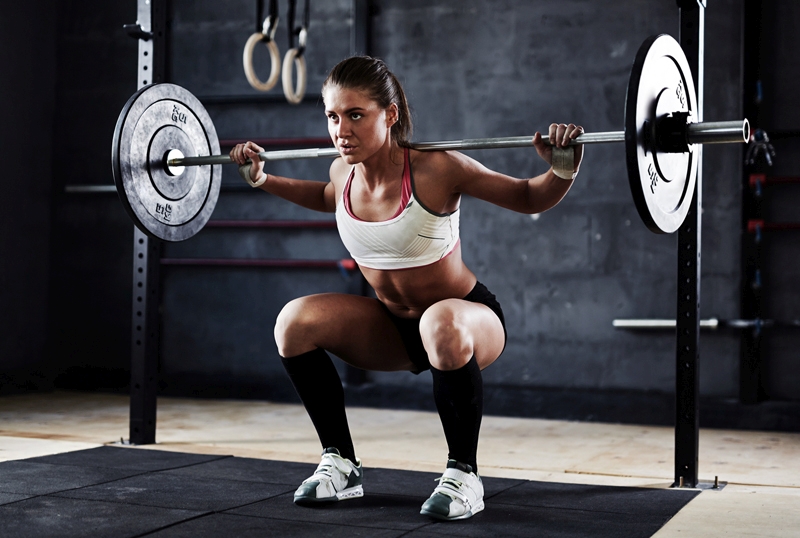You are viewing 1 of your 1 free articles. For unlimited access take a risk-free trial
Gym training: is your house in order?

What are the fundamental principles that should guide the overall structure of your gym training? Andrew Hamilton explains, and provides practical guidelines
When the nights draw in and the weather outside deteriorates, many athletes head for the gym. Not only can indoor workouts help maintain fitness levels when it would be otherwise impossible to train properly outdoors, numerous studies have now unequivocally demonstrated that resistance training confers a number of wide-ranging benefits to endurance performance. These include increased power and strength, higher levels of resilience against injury, and muscles that contract more efficiently, which means less energy is required to maintain a given sub-maximal pace.Putting a program together
As a qualified fitness coach in my earlier years, I trained a large number of athletes. What I learnt was that most athletes knew the basics of which exercises were needed to enhance their particular sport. Quite a few athletes also knew the correct technical execution of these exercises, and how to set the correct ranges of weight and repetitions (see this article for more information on that topic). However, what very few athletes understood are the basic principles needed to put a routine together – particularly when it came to the order of exercises. This was especially the case with recreational athletes/self-trained athletes, who didn’t have access to a coach. But the structure of a workout is very important indeed; ask any really experienced fitness instructor and they’ll tell you that the way the components of a workout are put together is just as important as what those components actually are – a classic case of the whole being bigger than the sum of its parts. Here then are some guiding principles on workout structure for anyone who trains in the gym, whether for sport or just for fitness.First things first
You can think about the structure of your workout at two levels. The macro-level refers to the order and structures of the different types of training you intend to do. For most of us, this means organizing in which order we do our cardiovascular (CV) and resistance work. However, macro-structure can also include the order of other components such as flexibility or plyometric work. The second level of order is the micro-level at which you arrange the individual exercises. For example, “Which order should I train my shoulders, back and chest in?” or “Should I bike first then use the treadmill, or do it the other way round?” When it comes to macro-structure, there’s only one unbreakable rule – namely that warm-ups should always come first. While this sounds blindingly obvious, you’d be amazed at how many people – even experienced trainers - walk into a gym, do a few heavy resistance exercises and then start swinging their limbs about as though it’s really going to make any difference at this point!Macro-structure
Warm-up over (see this article for more information on warm ups), it’s time to decide whether to tackle the resistance work, and then follow up with the CV work or vice-versa and also, when to do any flexibility work. The way you organize your macro-structure will probably depend on the goals of your training. Here a few pointers for you:- Resistance training followed by CV training – There are two arguments for using this structure. If strength or general muscular conditioning is your goal, you’ll be fresher this way and able to train more intensely, especially when it comes to legs, where even 20 minutes of CV work can reduce the muscles’ ability to work at maximum intensity. A second argument runs like this: “Because resistance training uses muscle glycogen almost exclusively as a source of fuel, doing weights first will mean that you’ll start your CV work already glycogen depleted. This in turn will mean that your body will both have to increase the proportion of fuel for its aerobic work coming from fat reserves and start digging into those fat supplies earlier than if CV is done first.” Of course, although it’s a plausible theory, as yet, there’s no scientific evidence validating it, which means that you should use this order primarily because you it leaves you fresher for resistance work!
- CV training followed by resistance training – There are also two prime reasons for preferring this structure. Firstly, aerobic training uses lots of muscles and generates plenty of heat. This means that you should be even better warmed for any resistance training that follows. Secondly, resistance work can be very draining, especially for novices. Some people find that the thought of getting on a bike or treadmill, while still shaking like a jelly after weight training is distinctly unappealing! Another reason for choosing this structure is if your prime goal of the workout is some high-quality aerobic training (topped off with a bit of resistance training). If this is the case, CV before weights will ensure you’re fresh for the aerobic work.
- Stretching/Flexibility – Let’s first distinguish between rapid light stretching whose main purpose is to mobilize muscles and joints through their full range of motion prior to use, and deeper developmental static stretching used to increase and develop flexibility over time. The former can be slotted in either after the warm-up, or in between the CV and resistance work (regardless of which comes first) because, being rapid, heat is still generated. Developmental stretches however are best done at the end of the workout, because after doing them, you’ll have cooled right down and relaxed – you won’t want to have to go through yet another warm-up to restart the workout.
Micro-structure
You could easily write a whole book on this subject, but here are some simple rules worth bearing in mind:*Resistance micro-structure:
- Big muscle groups should ideally come first. It takes more effort to train a big muscle group than a small one, so you need to be fresher. You’ll also generate lots of heat training big muscle groups, heat that will ensure you remain well warmed up for longer. As rough pecking order, muscle group size runs (from bigger to smaller): gluteals (buttocks), quadriceps (frontal thighs), hamstrings (rear thighs), latissimus dorsi (side back), calves, pectorals (chest), abdominals, lower back, deltoids (shoulders), upper back, triceps and biceps. Having said that, bear in mind that the earlier you place a muscle group in your workout, the harder you’ll hit it, as you’ll be that much fresher. This is important if there’s an area of your body that you need to target for a sport or that seems reluctant to respond.
- Perform compound movements (e.g. chest press) before isolation movements (e.g. chest flyes). Compound movements are the ‘power’ movements and again, you need to be fresh to give them 100%. The exception to this rule is advanced ‘pre-exhaustion’ overload movements, where you isolate and target a muscle group then IMMEDIATELY perform a compound movement involving the same muscle group, to drive the target muscles deeper into exhaustion – see this article for a more detailed explanation of pre-exhaustion/overload training.
- Don’t work the assisting biceps and triceps until you’ve completed your compound movements. For example, if you blitz your biceps, then move on to lat pulldowns, the biceps will be too exhausted to assist the big latissimus dorsi muscles to work. Although you’ll have well and truly worked the biceps to death, the much bigger latissimus muscles will remain comparatively untrained.
- When training upper body, try to alternate between ‘pushing’ and ‘pulling’ movements. When you push, you use triceps to assist; when you pull, you use biceps to assist. If you do two sets of bench press, two sets of incline bench press then follow it with the shoulder press, your triceps (which work in all 3 movements) will have given up long before your shoulders even get into gear!
- Leave abdominals and lower back until last for the simple reason that when everything else is exhausted, you’ll be less likely to cheat.
- If you’re after a circuit training/additional CV effect, alternate upper and lower body movements, while following the above guidelines.
*CV Micro-Structure:
When it comes to CV training, the issue of order is less important. However, if you’re planning to incorporate the rowing ergo into your workout, you might want to place it as far away as possible from any upper body resistance work. Although rowing is classified as CV training, it’s quite demanding on upper body strength, and can reduce even grown men to tears! Those who like to combine treadmill and bike work often find it’s easier to begin on the bike and to follow it with the treadmill. The smooth pedalling action of cycling combined with the fact that you can gradually increase your resistance makes for an easier route into a CV workout than leaping aboard the treadmill and pounding away from cold! Also bear in mind that stationary biking and stepping both use virtually the same sets of muscles – you may find it easier to separate these activities with something like rowing, treadmill or elliptical work.Newsletter Sign Up
Testimonials
Dr. Alexandra Fandetti-Robin, Back & Body Chiropractic
Elspeth Cowell MSCh DpodM SRCh HCPC reg
William Hunter, Nuffield Health
Newsletter Sign Up
Coaches Testimonials
Dr. Alexandra Fandetti-Robin, Back & Body Chiropractic
Elspeth Cowell MSCh DpodM SRCh HCPC reg
William Hunter, Nuffield Health
Keep up with latest sports science research and apply it to maximize performance
Today you have the chance to join a group of athletes, and sports coaches/trainers who all have something special in common...
They use the latest research to improve performance for themselves and their clients - both athletes and sports teams - with help from global specialists in the fields of sports science, sports medicine and sports psychology.
They do this by reading Sports Performance Bulletin, an easy-to-digest but serious-minded journal dedicated to high performance sports. SPB offers a wealth of information and insight into the latest research, in an easily-accessible and understood format, along with a wealth of practical recommendations.
*includes 3 coaching manuals
Get Inspired
All the latest techniques and approaches
Sports Performance Bulletin helps dedicated endurance athletes improve their performance. Sense-checking the latest sports science research, and sourcing evidence and case studies to support findings, Sports Performance Bulletin turns proven insights into easily digestible practical advice. Supporting athletes, coaches and professionals who wish to ensure their guidance and programmes are kept right up to date and based on credible science.












